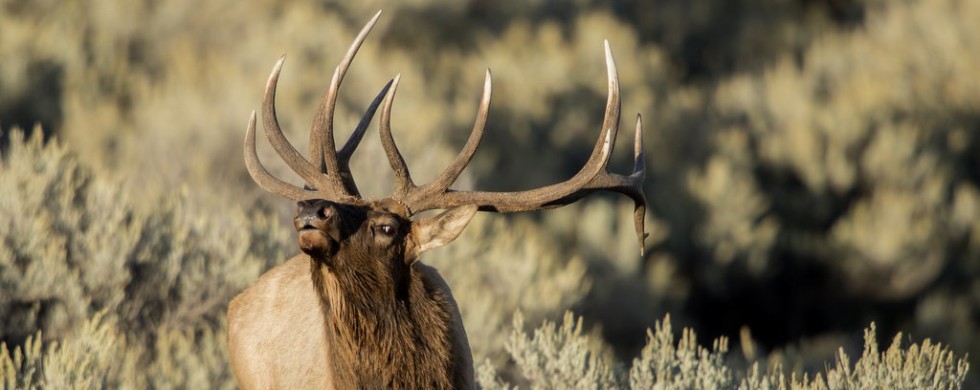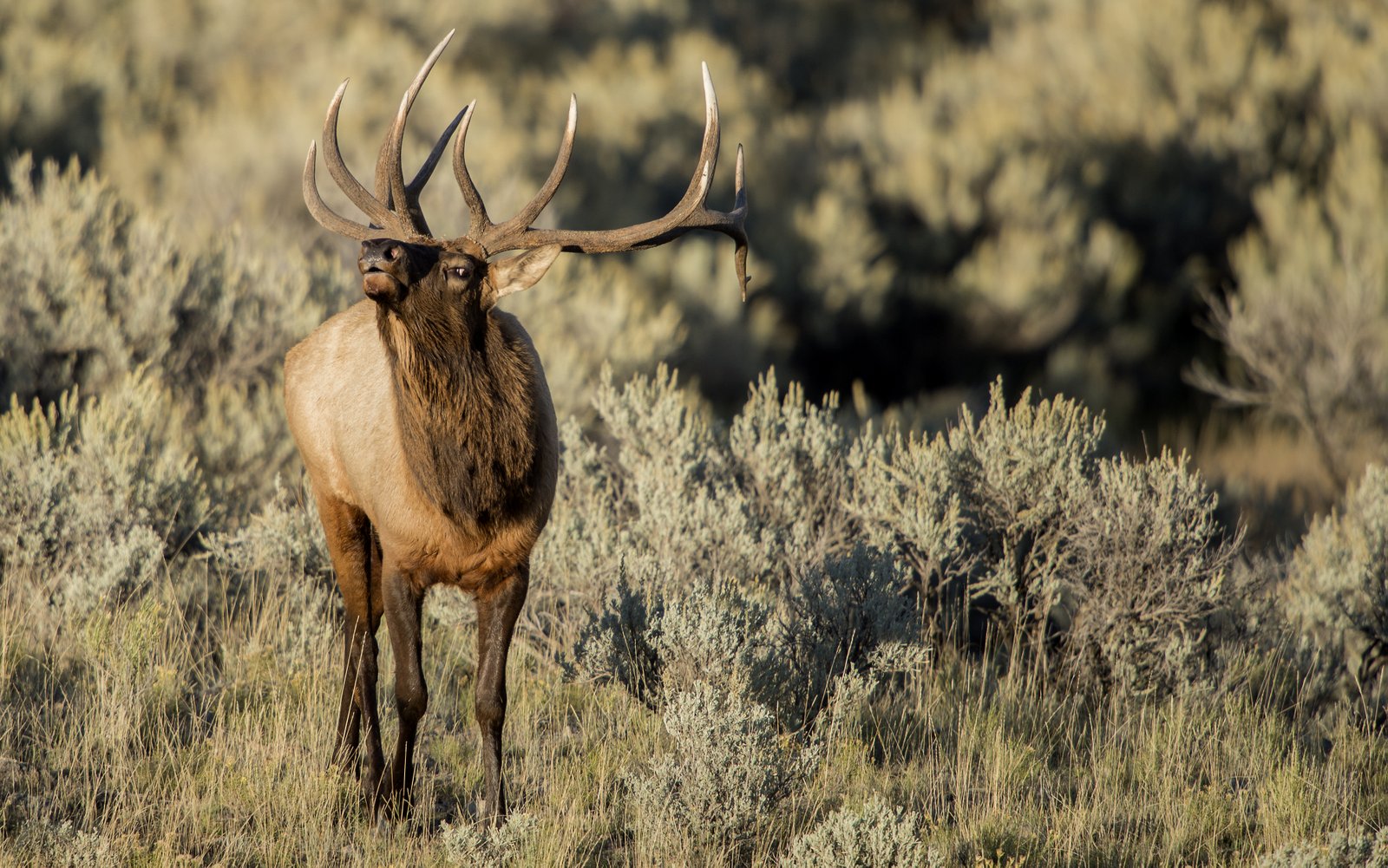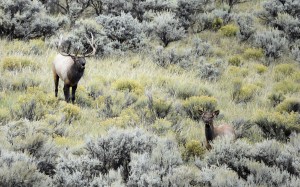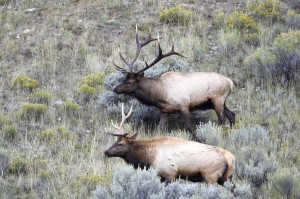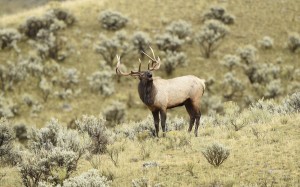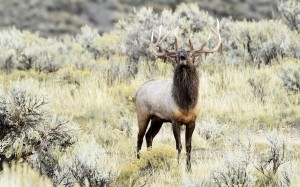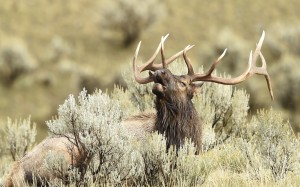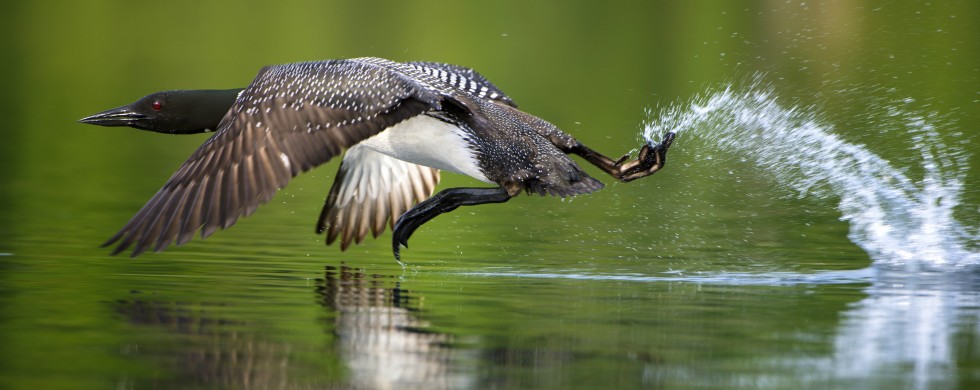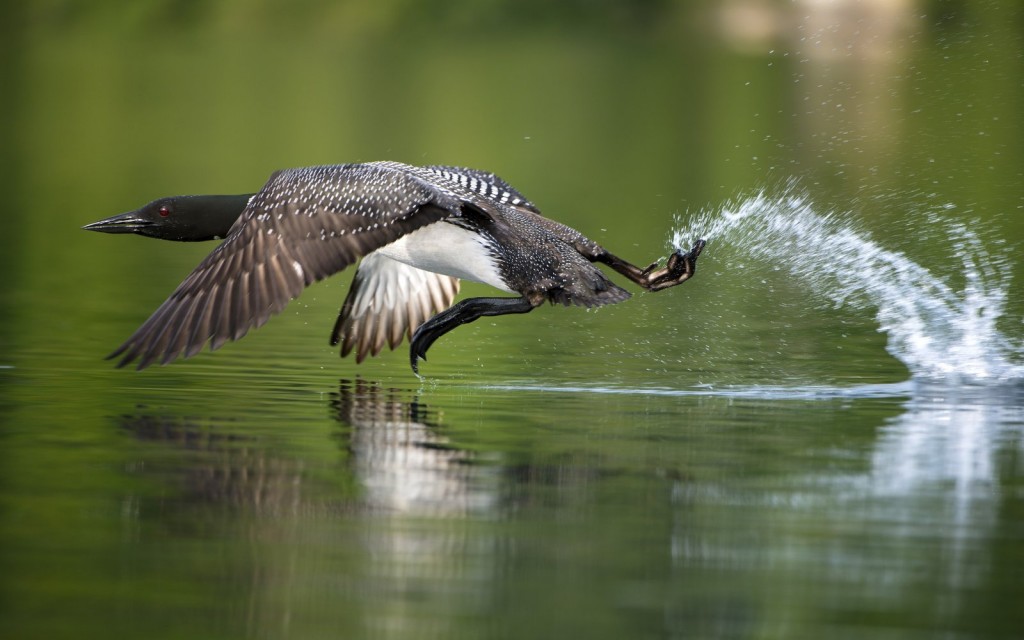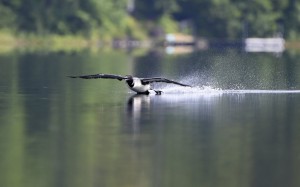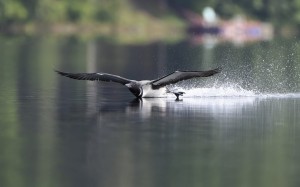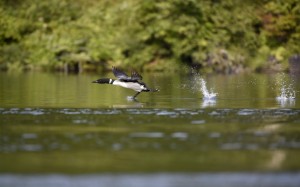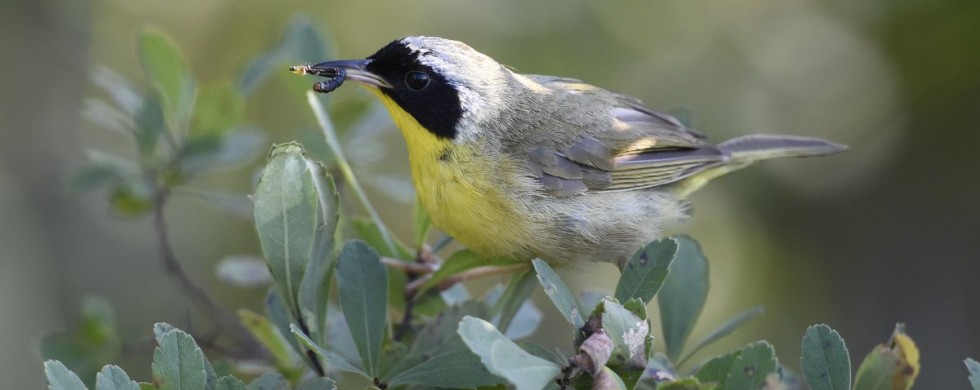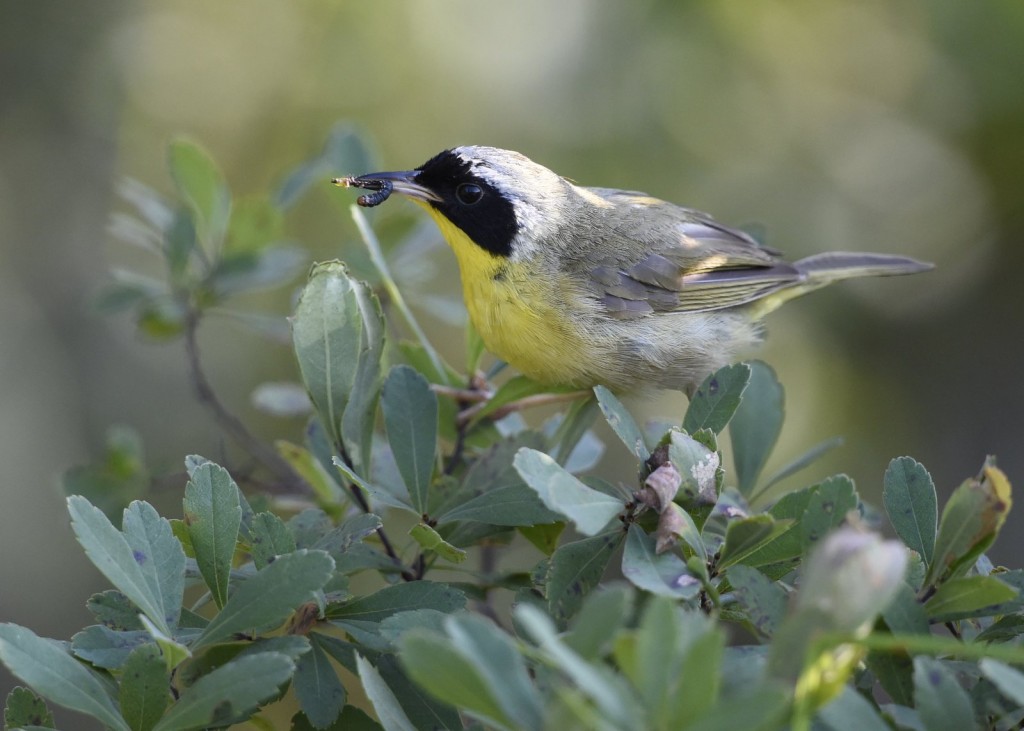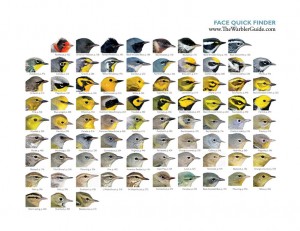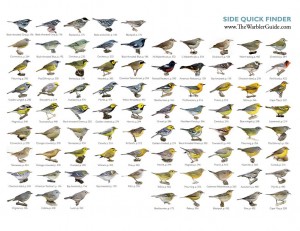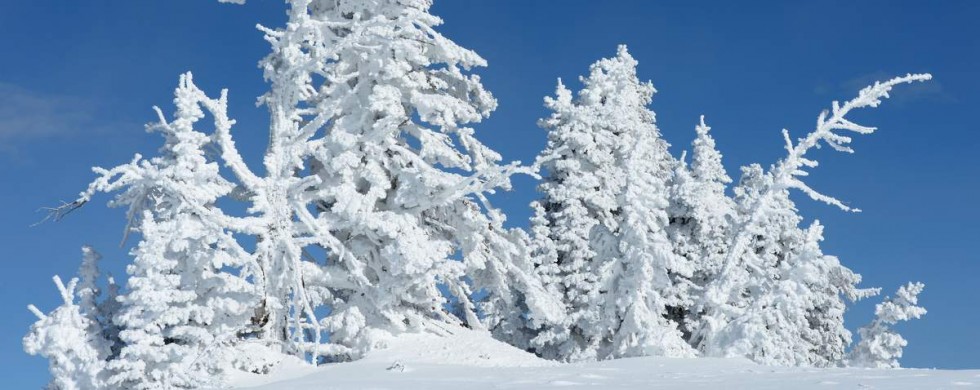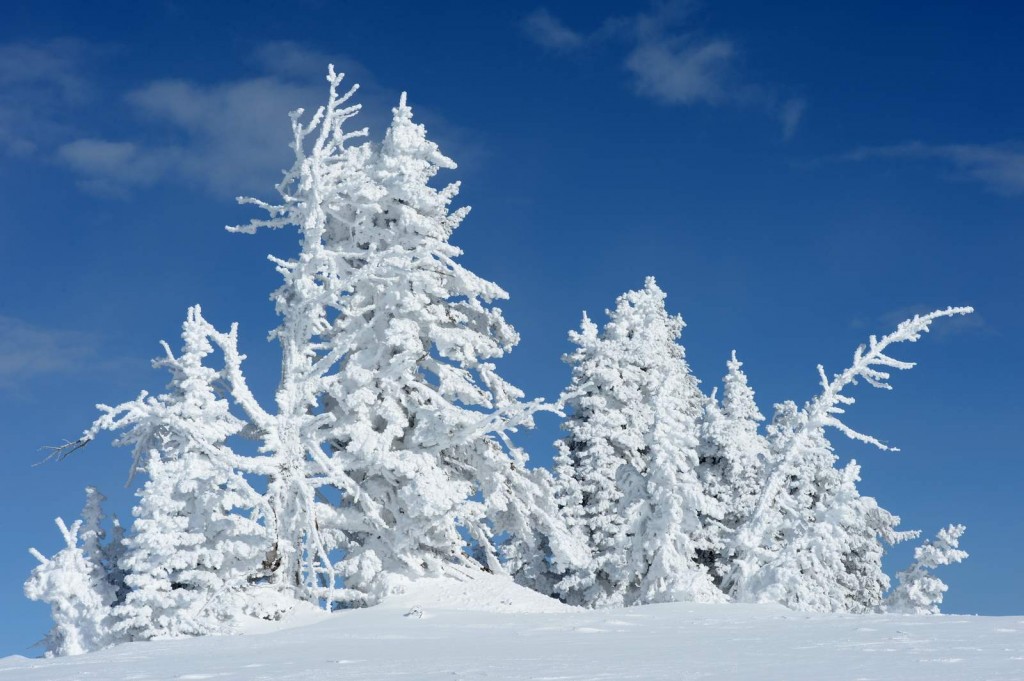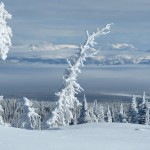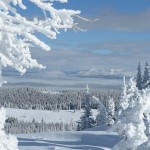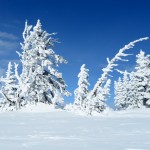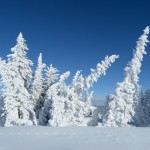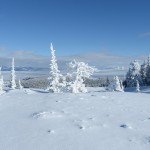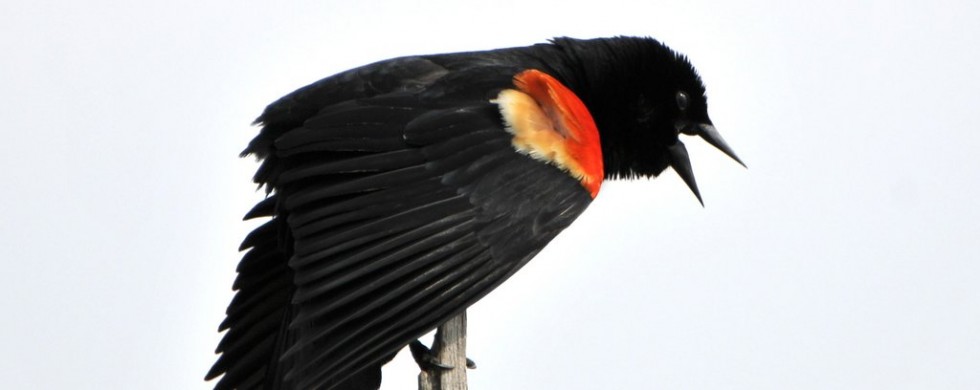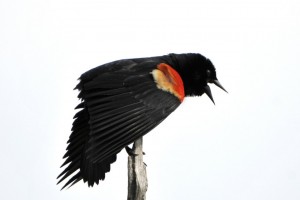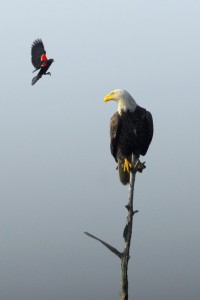31
Shot of the Month – October 2014
I highly recommend that you check out the bugle concert series held in Yellowstone National Park each fall. To be honest, the music is really just so-so — the event is more operatic than philharmonic. But you will be spellbound just the same.
As the dawn sun fights its way up, through the chilled air the mountains surrounding us slowly ignite with color. Laden with tripods, cameras, and lenses we clamber over hill and dale in search of the best balcony seats to catch the show. We wonder when, even if, the event might start as we drive our hands deep into our coats to fight off the cold.
And then, at the edge of the sky, the silhouette of a 700-pound bull elk blocks out the light.
Dramatic entrance indeed. The melee begins.
Standing five feet at the shoulder, with another four feet and forty pounds of antlers the rogue towers over 9 feet tall. Wide-eyed, he thrusts his chest forward as he peers down on the hills and valley below. His body is an endless twitch as testosterone courses through him. The chemical transforms him into a maniacally focused beast. He is driven to conquer his rivals and win the right to pass on his genes.
The elk rut has begun. Each day over the next 4-6 weeks he will repeatedly bugle, unleashing a loud, screech of a wail to attract female herds and warn off other male suitors. It can be heard for miles.
During this period the bull will eat little, bugle often, and continually……endlessly…..relentlessly chase and test cows for their readiness to mate. Cow elks only come into estrus for 1-2 days so the male must be ever diligent. In a word — obsessive.
The dominant bulls will protect a harem of up to 20 cows from competing males and predators. When necessary, the bulls will fight. Rivals bugle at each other. If both are of similar size they approach.
Males may walk in parallel sizing each other up while trying to intimidate. If neither backs down then they lock antlers and wrastle it out. These fights are rarely fatal but they take their toll.
The bulls are frenetic, rarely relaxing even for a moment. Constantly watching over the herd. Endlessly chasing and scolding cows that dare wander too far. Warding off lesser males. I was exhausted just watching. During the rut, a bull can lose 20% of his body weight. After such a tremendous effort some bulls will not recover in time and will perish during the winter.
For two fortnights, the continual call to arms leaves some victorious, others vanquished. And for this observer, it left a memory made up of surely more than just sound, but also fury, firmly etched into my being.
The below video, shot in the Rocky Mountain National Park, gives a sense of the bugle boys in action.
Nikon D4S, Nikkor 600mm, 1.4x TC, (850 mm) f/5.6, 1/750 s, ISO 400, +0.5EV

